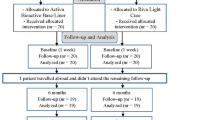Abstract
At a time when amalgam is used widely, yet when the criteria for its use are still evolving, the incorporation of an element of adhesive bonding between the amalgam and the base material may come into greater prominence and aid the general move towards more conservative new or replacement cavity preparations. This study assessed the 24-hour tensile bond strength of amalgam (Dispersalloy) to a light-curing glass-ionomer liner/base (Vitrabond), using Scotchbond dual cure, uncured Vitrabond or Vitrabond liquid as intermediaries. Using the Weibull distribution function, it was found that uncured Vitrabond was a better intermediary than Scotchbond or Vitrabond liquid. The bond strengths obtained with uncured Vitrabond intermediary were of the same order as those which can be expected between a glass-ionomer cement and dentine. This suggests scope for developing techniques for bonding amalgam to parts of cavity preparations
Similar content being viewed by others
Article PDF
Rights and permissions
About this article
Cite this article
Aboush, Y., Elderton, R. Bonding dental amalgam to a light-curing glass-ionomer liner/base. Br Dent J 170, 219–222 (1991). https://doi.org/10.1038/sj.bdj.4807483
Published:
Issue Date:
DOI: https://doi.org/10.1038/sj.bdj.4807483



